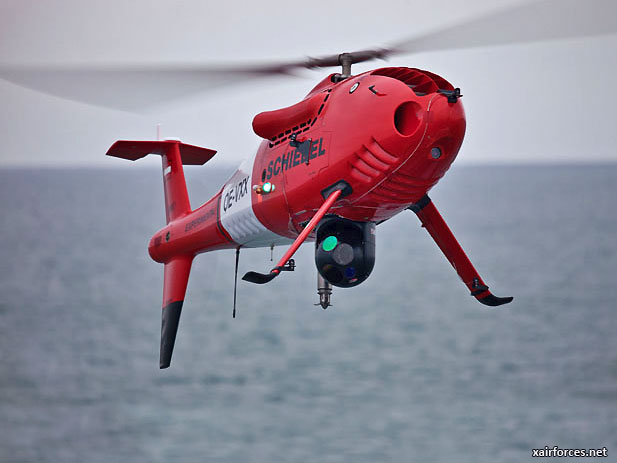
Heli-Pacific 2012: Schiebel S-100 crash due to loss of GPS

The 10 May crash of a Schiebel S-100 UAV in the South Korean port city of Incheon, which killed an engineer, was caused by a loss of GPS, the company has confirmed.
The engineer was killed and two others injured when the S-100 crashed into their ground control station during tests for the South Korean military.
Speaking at the Heli-Pacific conference in Queensland, Australia on 23 May, Neil Hunter, Schiebel managing director, confirmed it was a loss of GPS that helped create the conditions for the crash.
While local media reports have suggested that the South Korean military is now investigating whether the jamming of GPS signals by North Korea could have caused the crash, Hunter did not speculate on the loss of GPS.
‘What happened was extremely tragic and should never have happened. But it did and not only Schiebel but the wider industry must learn their lessons from that,’ Hunter said.
‘The only thing I can say is there is an investigation under way. The initial investigation proved the fact the system lost its GPS – we don’t know why it lost its GPS other than the only time we have seen it lose GPS is when it is jammed but I can’t go any deeper than that statement.’
Hunter noted that there were procedures for when the GPS signal is lost but suggested that human error may have contributed to the crash.
‘The aircraft did everything that it should have done and was expected of it but unfortunately what appears to have happened is human and a number of mistakes have piled up like a bunch of dominos and caused the eventual effect.’
In his presentation to the conference, Hunter highlighted the excellent safety record of the S-100 but conceded that for many the safety case of employing UAVs for many tasks had still to be proven.
‘Any crash that happens in the UAV world gets the sceptics shouting louder saying these things are not safe, they shouldn’t be allowed to fly anywhere that sort of thing. But what actually happened was a chance in a billion to hit the ground control station – it was flying in regulated airspace, it was flying in a very clean area. So everything was done exactly as it should have been.
‘But any crash affects the UAV world as it tries to prove the safety case. Our system has an extremely good safety record and this is the first time we have had something like this and it is very unfortunate.’
Source: By the Shephard News Team - 23 May 2012
Photo: The South Korean Air Force Schiebel S-100 UAV (Photo by shephardmedia.com)
(23.05.2012)
|